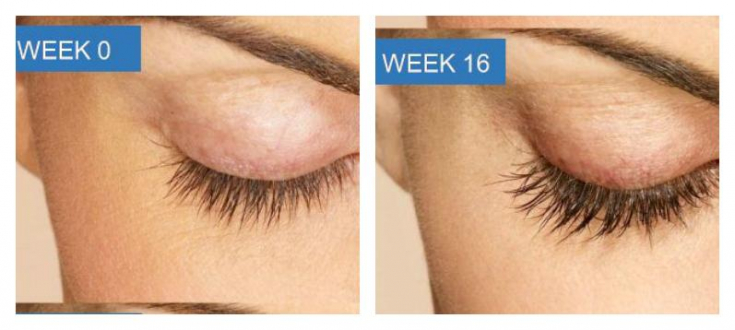Large long lashes have been on the list of unchanging beauty standards for many years. The beauty industry offers many ways to make eyelashes attractive – mascaras, false eyelashes, extensions and other treatments.
There are also preparations that improve the quality and appearance of natural eyelashes. They are becoming more and more available and are in demand among patients of aesthetic clinics.
In this article, ophthalmologist Jennifer Doyle talks about the mechanism of action of eyelash growth serums, as well as the rules for the safe use of products based on prostaglandin analogs.
Active ingredients in eyelash growth serums
Eyelash growth serums can be divided into two types: with and without prostaglandin analogues. Prostaglandin analogs are derived from unsaturated fatty acids. These are substances with pharmacological activity that have been used for a long time in the treatment of glaucoma.
Follow us on Instagram!
During the treatment of glaucoma with prostaglandin analogues, ophthalmologists noticed an interesting "side effect"; – increase in the density and length of eyelashes.
The first FDA-approved eyelash enhancer in 2008 was Alleran's bimatoprost.
Bimatoprost 0.03% can be purchased under the international generic name bimatoprost or under a registered trade name such as Lumigan.

In the most significant clinical trials on the use of prostaglandin analogues to improve eyelash growth, experts have studied the effects of bimatoprost. However, a similar effect is seen with substances such as latanoprost (Xalatan) and travoprost (Travatan), which are also used to treat glaucoma.
What is the reason for the effectiveness of prostaglandin analogues in improving eyelash growth
Prostaglandin analogs are thought to exert their effect by influencing the eyelash life cycle, which normally takes about four months and consists of phases:
• anagen (growth);
• catagen (transition period);
• telogen (rest).
During telogen (the longest phase), eyelash growth stops and hairs fall out, after which the anagen phase starts.
Prostaglandin analogues stimulate the transition of hair follicles from telogen to anagen, resulting in an increase in the number of eyelashes that are in the active growth stage; and also prolong the growth phase, which leads to an increase in the length of the eyelashes.
Prostaglandin analogues stimulate the transition of hair follicles from telogen to anagen, resulting in an increase in the number of eyelashes that are in the active growth stage; and also prolong the growth phase, which leads to an increase in the length of the eyelashes.
Eyelash growth serums: contraindications and side effects
Studies have confirmed not only the efficacy, but also the safety of prostaglandin analogues when used in the periorbital area and in case of contact with the eyes (which is inevitable when applying the drug to the eyelashes).
However, in rare cases (in less than 4% of patients), eyelash growth serums can lead to the following side effects:
• eye irritation;
• itching;
• redness of the eyelids;
• changing the color of the iris;
• darkening of the skin around the eye.
The patient must be warned about such side effects before starting treatment, as some of them may be irreversible, for example, a change in the color of the iris from blue to brown can be observed due to an increase in the content of melanin in melanocytes under the action of prostaglandins.
Although contraindications to the use of eyelash growth serums based on prostaglandin analogues are limited to hypersensitivity to the active ingredients of the drug, pregnancy and lactation, there are factors that must be taken into account when prescribing therapy to patients:
• with glaucoma;
• ocular hypertension;
• uveitis;
• pseudo-phakia;
• blepharitis.
Prevention and treatment of complications of aesthetic correction in the periocular region
Eyelash growth serum based on prostaglandin analogues – a popular, affordable and effective method for improving the condition of the patient's own eyelashes, the effectiveness and safety of which has been proven in scientific studies. However, like any other drug, they should be prescribed with caution, after consultation, taking an anamnesis and informing the patient about the possible side effects of treatment.
Adapted from Aesthetics







Add a comment